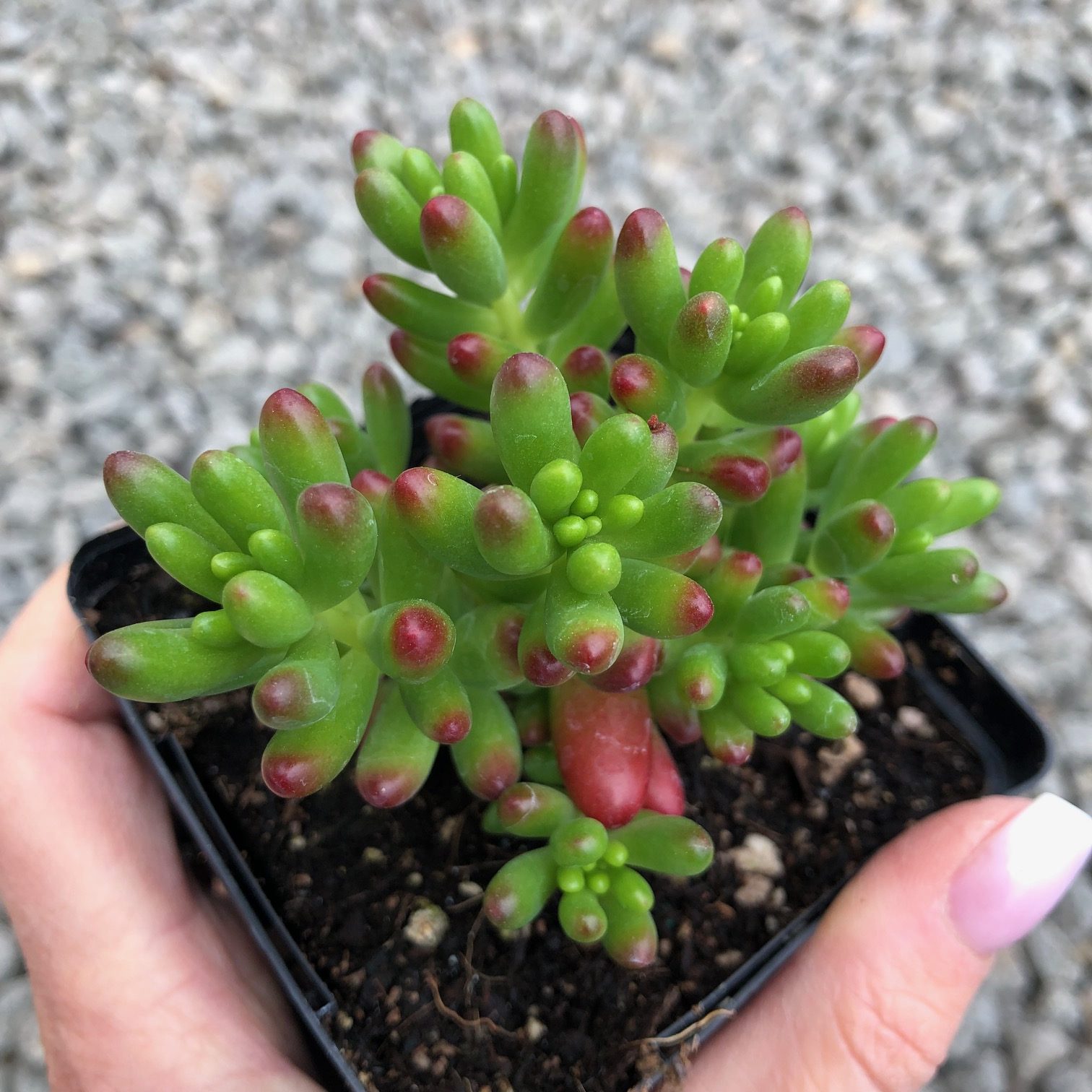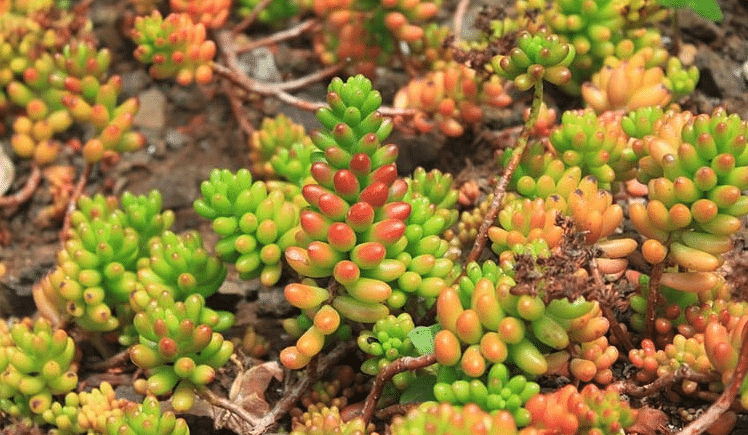
This captivating succulent has light green foliage that darkens to a vivid red hue when exposed to lots of sunlight. It has a tough stem and produces yellow blooms each Spring.
Table of Contents
Care and Propagation Information
Sedum rubrotinctum “Pork and Beans” is an entertaining succulent with round leaves that resemble beans. It is widely admired by succulent enthusiasts. When provided with the right amount of stress, its leaf tips will turn a reddish hue.
Watering
Sedum rubrotinctum has the same water requirements as other succulents. It is recommended to provide a thorough watering followed by a period of allowing the soil to become completely dry before watering again. This process is often referred to as the “soak and dry” method.
Where to Plant
If you live in an area with cold winter temperatures, it’s best to keep Pork and Beans in a pot that can be brought indoors. This succulent will thrive in either full sunlight or partial shade.
Put the plant in a spot in your yard that receives 6 hours of direct sunlight each day.
Commonly Mistaken For
Sedum rubrotinctum “Aurora” has leaves that are more pinkish in hue and may be variegated. The flowers of this variety are a paler shade of yellow.
How to Propagate Sedum rubrotinctum “Pork and Beans”

Leaves
The leaves of “Pork and Beans” are highly conducive to propagation.
To propagate a leaf, carefully twist it off the stem, making sure that all of the leaf comes off intact. This will increase the chances of a successful propagation.
It is not uncommon for Sedum rubrotinctum to shed some of its leaves. While this is not typically a sign of over-watering, you can collect the dropped leaves and use them to propagate new plants.
Wait for the leaf to develop a protective layer of cells before putting it in a soil that allows excess water to drain away.
Cuttings
To propagate “Pork and Beans” plants, first take a cutting with a clean, sharp knife or scissors. Let the cutting sit for a few days so the end can dry out and form a callus. Once it is callused, place the cutting in a pot of soil that is well-draining and water only when the soil is completely dry.
Care and Propagation Information
General Care for sedum-rubrotinctum-pork-and-beans
Sedum rubrotinctum “Pork and Beans” is an entertaining succulent with round leaves that resemble beans. It is widely admired by succulent enthusiasts. When provided with the right amount of stress, its leaf tips will turn a reddish hue.
Watering
Sedum rubrotinctum has the same water requirements as other succulents. It is recommended to provide a thorough watering followed by a period of allowing the soil to become completely dry before watering again. This process is often referred to as the “soak and dry” method.
Where to Plant
If you live in an area with cold winter temperatures, it’s best to keep Pork and Beans in a pot that can be brought indoors. This succulent will thrive in either full sunlight or partial shade.
Put the plant in a spot in your yard that receives 6 hours of direct sunlight each day.
Commonly Mistaken For
Sedum rubrotinctum “Aurora” has leaves that are more pinkish in hue and may be variegated. The flowers of this variety are a paler shade of yellow.
How to Propagate Sedum rubrotinctum “Pork and Beans”
Sedum rubrotinctum is an incredibly fast-growing plant, easily reproducing from any leaves that drop off the stem.
Leaves
The leaves of “Pork and Beans” are highly conducive to propagation.
To propagate a leaf, carefully twist it off the stem, making sure that all of the leaf comes off intact. This will increase the chances of a successful propagation.
It is not uncommon for Sedum rubrotinctum to shed some of its leaves. While this is not typically a sign of over-watering, you can collect the dropped leaves and use them to propagate new plants.
Wait for the leaf to develop a protective layer of cells before putting it in a soil that allows excess water to drain away.
Cuttings
To propagate “Pork and Beans” plants, first take a cutting with a clean, sharp knife or scissors. Let the cutting sit for a few days so the end can dry out and form a callus. Once it is callused, place the cutting in a pot of soil that is well-draining and water only when the soil is completely dry.
